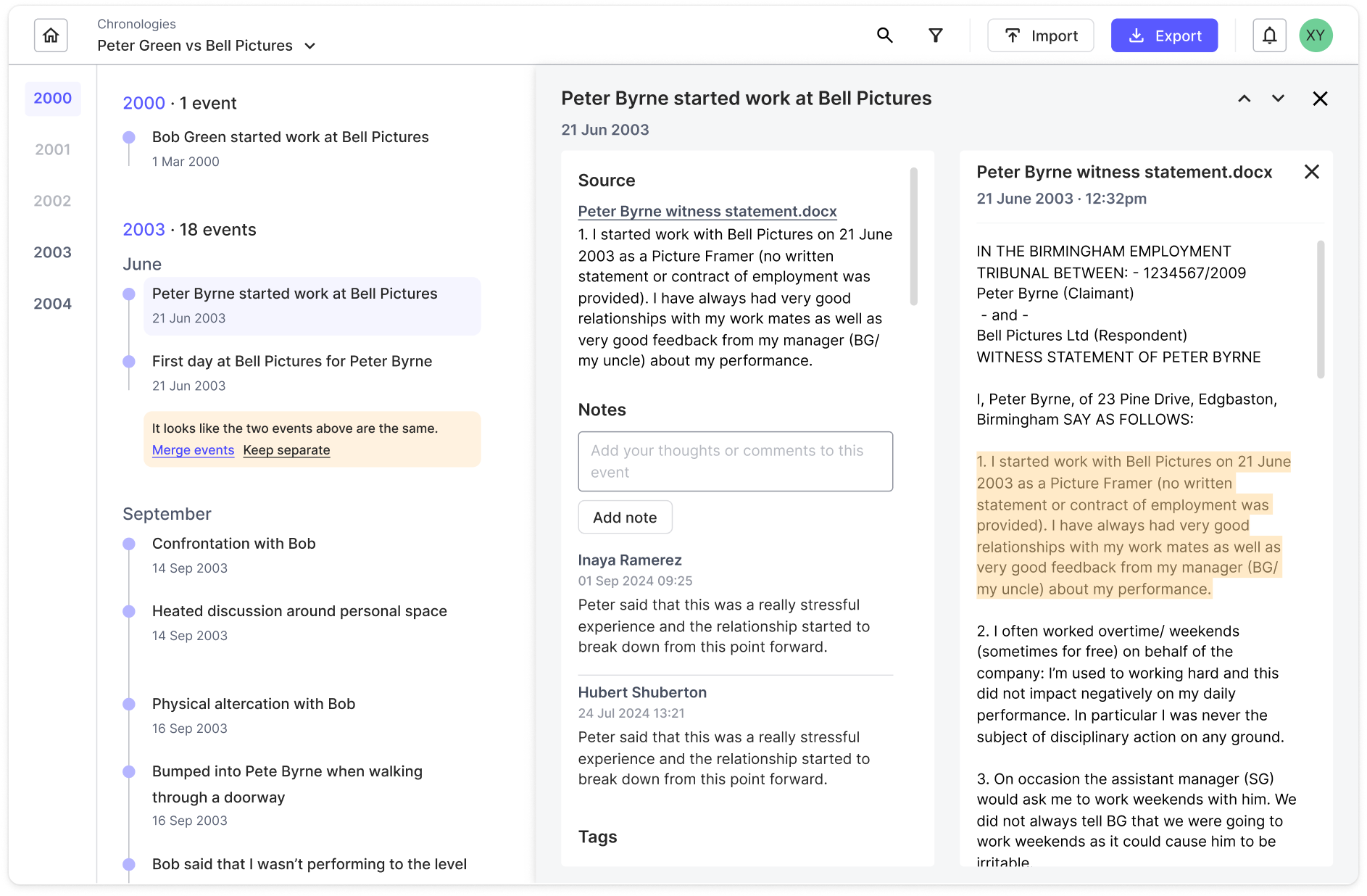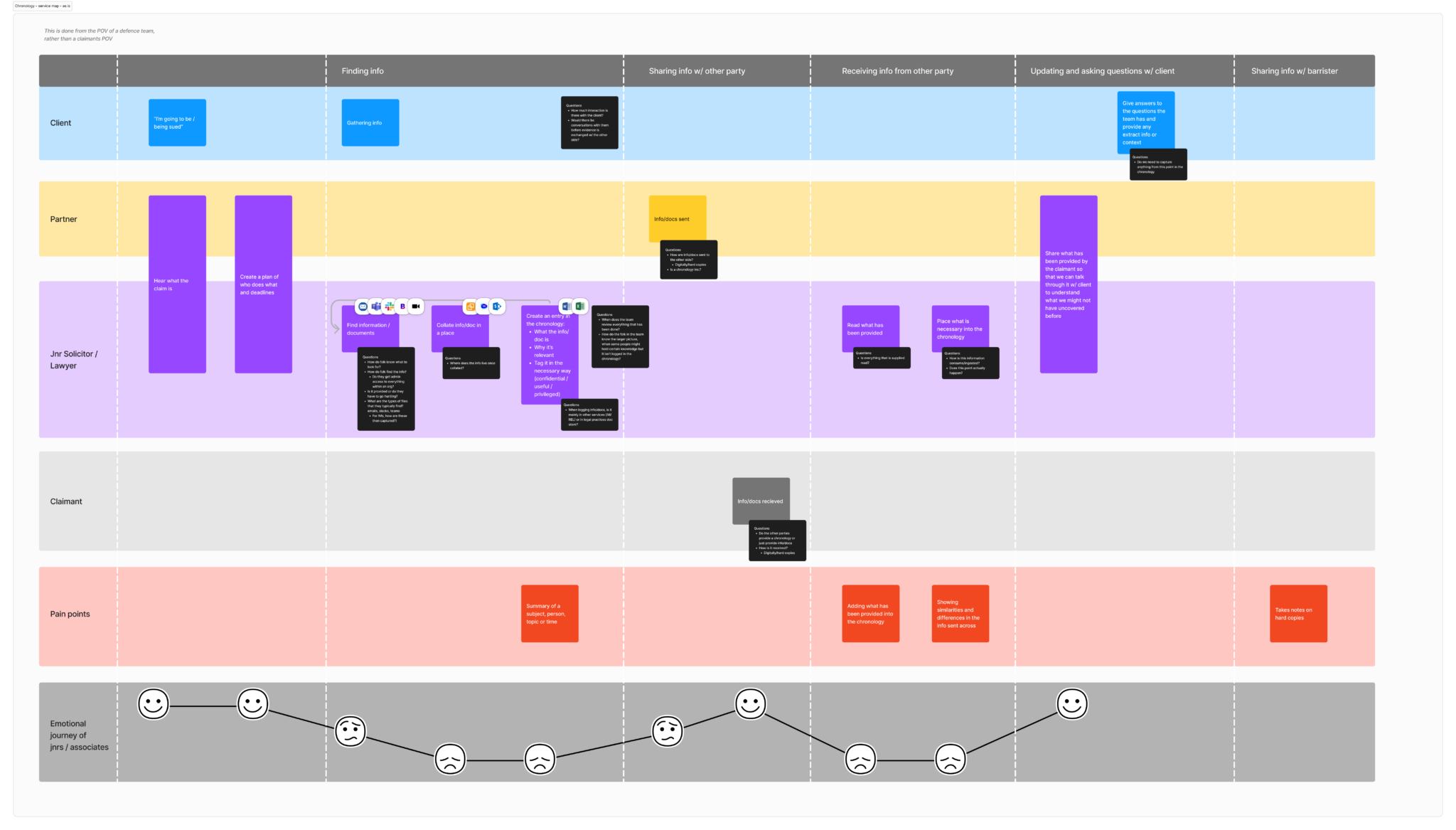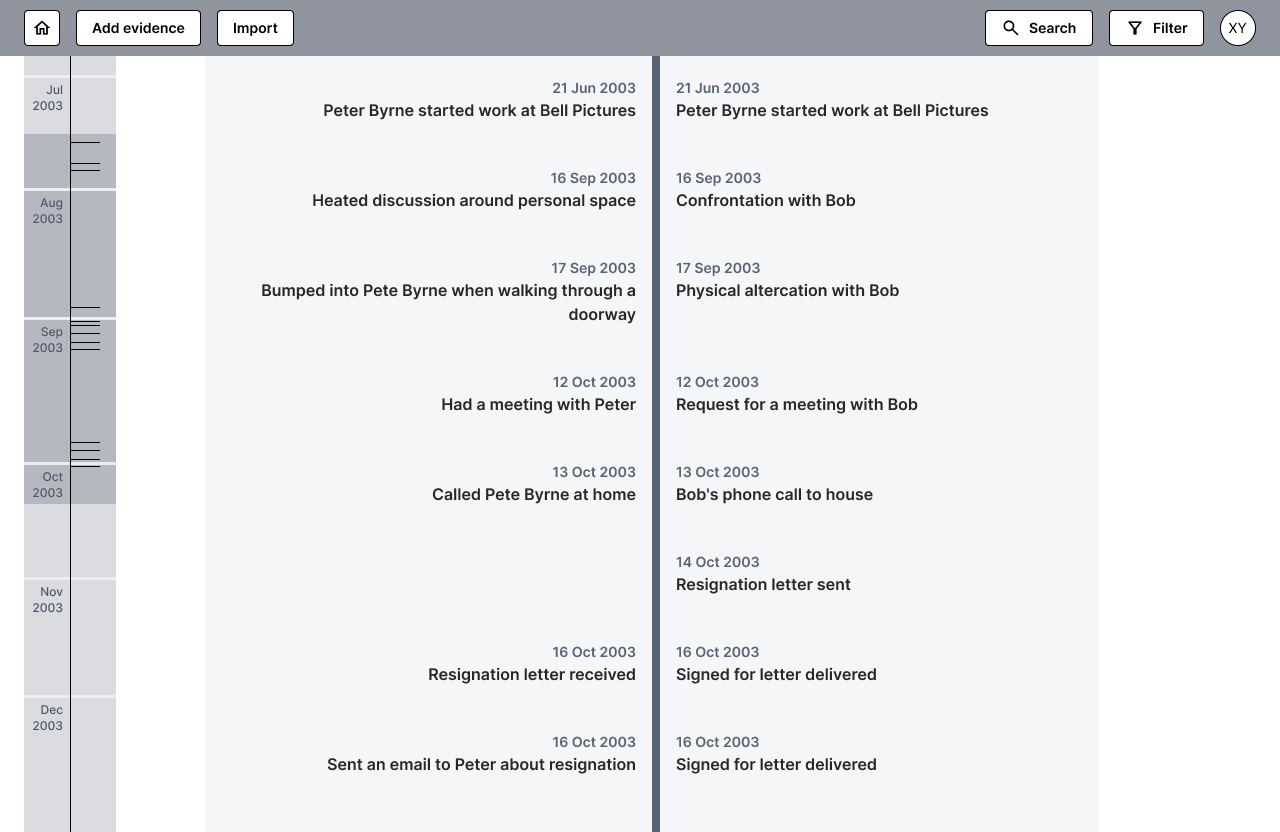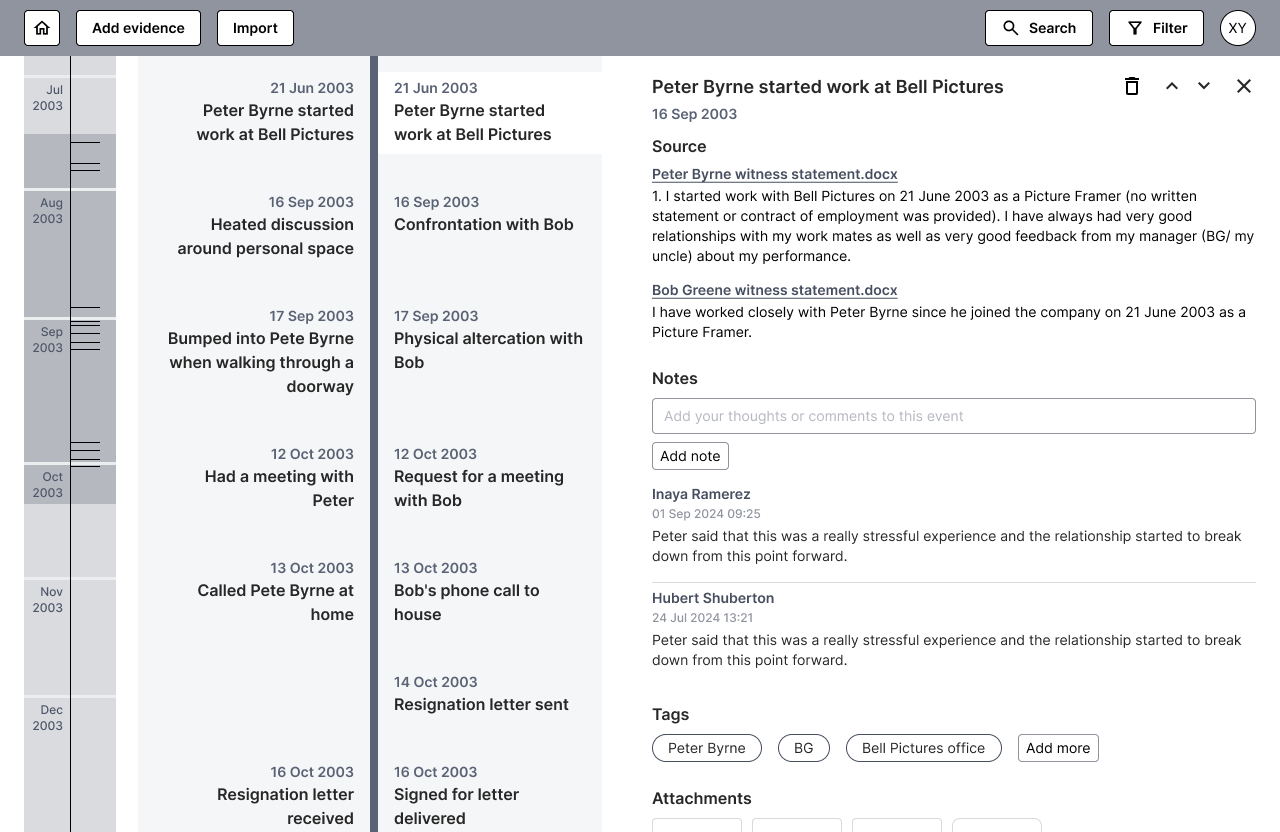A proof of concept for a new product
Hey there, this is the default text for a new paragraph. Feel free to edit this paragraph by clicking on the yellow edit icon. After you are done just click on the yellow checkmark button on the top right. Have Fun!

Overview
Jigsaw develops apps for legal, financial, and accountancy sectors, specialising in data-rich business diagrams.
Jigsaw has an app which allows event plotting on a time axis, mainly used for case visualisation and project management. We noticed users weren't utilising it for past events, which is crucial for lawyers presenting case evidence.
Myself and my product manager hypothesised that there’s a gap in the market and AI could help in this area. We were given 4 weeks to develop and test a concept to potentially assist Jigsaw customers and drive business growth.
Key takeaways
- Customers said they were interested in the concept and it would bring value to their clients.
We identified that there was a gap in the market for a solution like this.
We were able to test the AI idea and had a proof of concept created to demo to customers.
Understood customers’ and their current pains.
The problem
When a lawyer works on a case, they need to understand all the events that have happened. Examples of cases could be; medical negligence (an amputation occurred when it shouldn’t have), a corporate dispute (contractual obligations we’re missed) or employment dispute (bullying and harassment in the work place).
Each of the examples above will have events within them, some events occuring down to the second.
However, all this information can come from many sources (emails, contracts, reports, messages and diary entries). All off which needs to be cataloged and made easy to reference. The current ways in which customers work is to have a shared document or sheet, something similar to the image below.

An example of a chronology that litigators typically use.
When a lawyer works on a case, they need to understand all the events that have happened. Examples of cases could be; medical negligence (an amputation occurred when it shouldn’t have), a corporate dispute (contractual obligations we’re missed) or employment dispute (bullying and harassment in the work place).
Each of the examples above will have events within them, some events occuring down to the second.
However, all this information can come from many sources (emails, contracts, reports, messages and diary entries). All off which needs to be cataloged and made easy to reference. The current ways in which customers work is to have a shared document or sheet, something similar to the image below.
The goal
To test the following assumptions with lo-fi mockups demoed to customers:
- Extracting events from documents and creating a chronology is painful. Having it containing links to evidence is even worse.
- Customers would trust an AI to create events for them from evidence.
- Handling multiple documents in a case to find conflicts and corroborations is tedious and time-consuming.
- Having our customers show their clients a straight forward and clean output, brings the client more trust in the legal teams ability.
My role
- I worked with product managers to narrow down the scope of the work.
- Conducted lightweight research with Jigsaw staff who had some working knowledge of, or have heard about this type of problem, within in law firms.
- Designed lo-fi visuals to get an internal consensus. Kept stakeholders informed of the progress and showed the CEO the prototypes for feedback.
- Demo’ed and tested the concept to customers, gathered feedback and iterated.
The process
- Understood the legal teams journey from the client contacting the firm, through to the case going to trial. To help the team understand this, a service map was created to allow us to ask ourselves questions about the process.

Mapping out the interaction between the client, the legal firm and internal teams. Including different tooling used.
- Worked with the AI team to understand if the concept could be achievable. They were able to create a quick proof of concept, illustrating what could be output.
- Engaged with the engineering team early in the journey, asking if we could explore the potential to link to specific sentences within a document, rather than just a document. This would provide a better experience for customers when viewing events.
- Create lo-fi prototypes to get feedback internally before booking in with customers to test with.


Initial frames showing how a chronology could be visualised by time from two different parties. As well as the details and attachments to a specific event.
- I shared the work with the design team, getting an outside perspective on aspects that might have been overlooked, and iterating as I went.
- Carried out remote testing with customers to show them the AI proof of concept, to prove we could actually do what we were considering. I also ran through the prototype and gathered their thoughts, concerns, and overall feedback.
A quick clip of a hi-fi screen going into an event and seeing the evidence from which the event was created. Also merging to events which are similar in nature and viewing the now single event.
Outcome
The experiment was a success. We tested our assumptions and found the following:
- Customers would be interested in using a product like this to help their conversations with their clients. As well as the upfront work of creating and maintaining chronologies.
- Working with the AI team, they proved that extracting events from documents is possible.
- It was also achievable to use AI to highlight and point out areas of conflicting or corroborating events or information when using many documents.
- The engineering team proved that AI could output what we needed it to while also allowing the customer to check the work. Most importantly, it was possible to allow the customer to edit, add, or delete anything that they needed to. Giving them the flexibility that was needed.
Next steps
From the discussions with customers and building on the findings, the following next steps we’re identified:
Continue with the discovery of how our customers work with their clients.
When the other party in the case provides their evidence, they typically will drown a legal team in evidence. We wanted to test the AI with the following:
- If our customer already had a document the opposite legal time has, highlight this on the necessary events created.
- Plot any new events, based on the incoming evidence that our customer doesn't already have.
- Work with engineering to create a proof of concept to flag if events are conflicting or corroborating, based on the evidence that has been added.
Challenges
Lawyers' time is expensive, making getting direct feedback on new ideas challenging. Instead, we rely on Innovation Team members from client organisations. This presents difficulties, as these team members may not fully understand lawyers' workflows or day-to-day operations. As a result, evaluating the true potential and value of a new concept becomes more challenging.